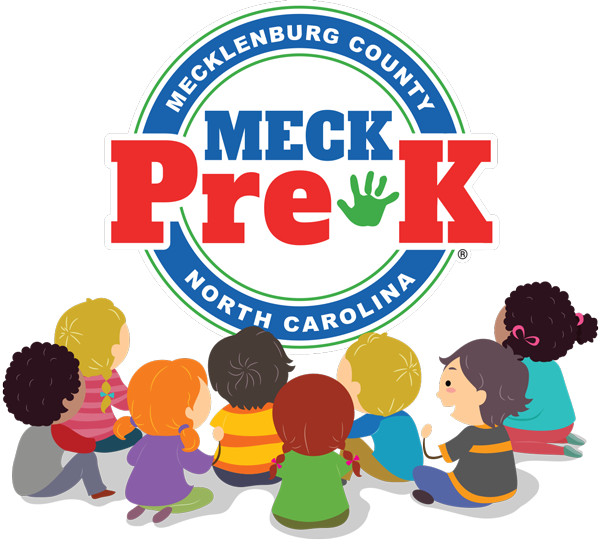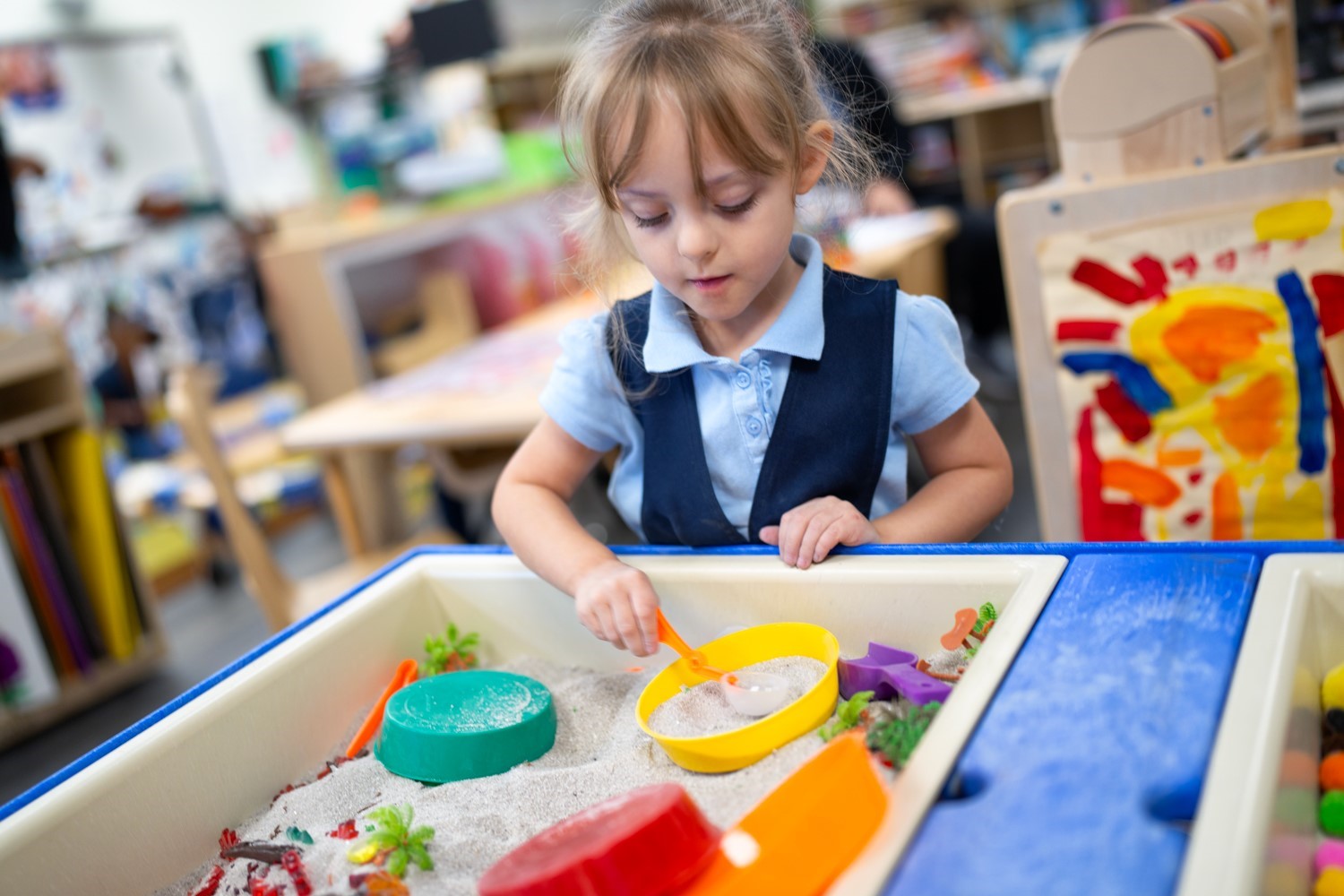Have you ever walked into a pre-K classroom? You might see colorful decorations on the walls, child-sized furniture, and maybe even dress-up clothes. You might think, “this is cute.” But there is so much more that goes into the design of a pre-K classroom! A high-quality pre-K program will follow best practices based in the latest pre-K research to create an environment for learning and growth. Let’s break down some of the elements that go into designing a pre-K classroom.
The “Third Teacher”
When it comes to pre-K classrooms, a foundational belief is that the environment acts as a “third teacher.” The first teacher is a child’s parent/primary caregiver, the second teacher is the classroom teacher. How a classroom is arranged, and what it contains, sends messages to children about how the space should be used.
A high-quality pre-K classroom contains multiple “interest areas,” or “stations,” that contain materials inviting rich engagement. This is because much of a child’s learning takes place through exploration and having the time to dig deeply into what interests them.
Different Types of Stations
Every classroom has a variety of stations for different activities. Each station’s size is carefully considered and shaped to accommodate the number of children best suited to the activity.
- For example, dramatic play or housekeeping stations are larger because they are intended to encourage play where children interact with each other and take on roles.
- A writing station, on the other hand, might be a one-person station equipped with many different instruments for creating print, such as pencils, markers, or chalk. This gives the child an opportunity to work with fewer distractions.
- Other stations might accommodate 3 to 4 children so there is some opportunity for interaction, but not so large that a child can’t concentrate if they wish to work individually. These stations could include classroom libraries for literacy activities, music and art stations, and areas for engaging in math and science activities.
Areas for Different Activities
In most classrooms, louder or more active stations are placed away from ones where quiet is desired. There are also no large, open areas that would encourage running or rough and tumble play. Those activities are saved for the outside play area.
Each classroom has a large enough and soft enough area for the whole class to gather at once for short group activities, like reading a story or exploring problems through group discussion and problem solving. In some pre-K classes, this might be called “circle time.”
It’s important to have a variety of areas within the classroom. Children are very aware of their environment, and they respond best when they have access to big spaces, open spaces, small spaces, and cozy spaces. The right kind of space encourages activity, imagination, and educational opportunities.
Engaging the Senses
A well-designed pre-K classroom will have as much natural daylight as possible. This allows the teacher to help children track the time of day, the weather, changes in seasons, etc. It will also have a variety of textures and visual aids. You will see solid and firm structures, like tables and shelves, provided for some activities; and soft, pliable, inviting spaces like beanbags or cozy nooks, provided for times of quiet and comfort.
Visual aids might include pictures of children performing regular classroom activities next to a clock, showing when different activities occur during the day. This helps children gain a sense of the rhythm of the school day and understand that there is a time for everything.
Based in Research
One great source of information about pre-K classroom setup is “Building Environment,” from the National Association for the Education of Young Children. Here are some key takeaways from this article.
- Consistent and predictable classroom environments, schedules, and routines can increase children’s independence, ability to anticipate change, and likelihood of using appropriate behavior.
- Positive behavior results when classroom stations are well organized, nicely defined, and the right size; and when the class schedule is balanced, posted, and illustrated with photos.
- Learning environments have a strong impact on the children in them, which is why it’s so important to design these classrooms with research-based best practices.
Another resource is “Impact of Classroom Environment on Children’s Social Behavior” from the International Journal of Education and Practice. This article tells us that: “Good classroom arrangement inspires, and encourages children to easily interact with each other and develop various skills including language, and social behavior. Poor classroom physical arrangement may affect children’s free movement and can result into social behavior problems.”
Creating Positive Experiences
A child’s educational setting should support high-quality activities and allow for quality learning through discovery and creativity. Because all children are different, a classroom needs to provide positive and enriching experiences for different children at different times. In a high-quality pre-K classroom, a child can move, explore, experiment, and discover for themselves. They take in their environment and find different ways to interact with it, which aids in their development.
In the book Child Care Design Guide, author Anita Rui Olds says that children have four major environmental needs within a classroom: movement, comfort, competence, and control.
- Movement: they need to move within a safe and tolerable limit.
- Comfort: they need moderate and varied levels of stimulation for all senses.
- Competence: they have a need for the feeling of success especially when negotiating and navigating the environment.
- Control: they need to acquire increased levels of autonomy by making decisions on their own and exercising control.
Finding the Right Pre-K Environment
Now that you know what goes into a successful pre-K classroom setup, how can you find a pre-K program that’s right for your child? Look around your community for high-quality pre-K programs that use research and best practices in teaching and setting up their classrooms. Look for pre-K programs with teachers that have pre-K certification and do regular professional development. If you live in Mecklenburg County, you have access to MECK Pre-K – a high-quality pre-K program open to all four-year-old children in Mecklenburg County at no cost to families.
About MECK Pre-K
MECK Pre-K classrooms are located in licensed childcare centers and taught by licensed teachers and highly qualified assistant teachers. You can apply online at MeckPreK.org. If you have a child who is not old enough for pre-K this year, you can sign up for our email list and be notified when they’re eligible for MECK Pre-K. Simply go to MECKPrek.org/future-meck-pre-k-students and select your child’s age group.

